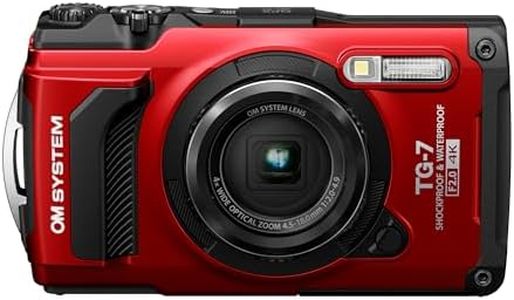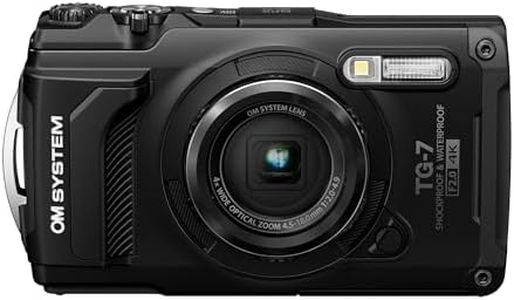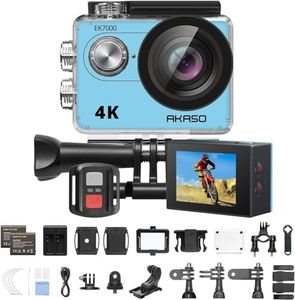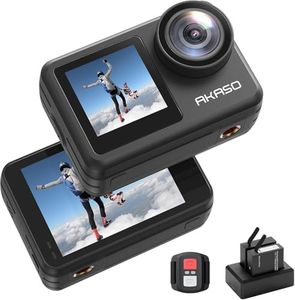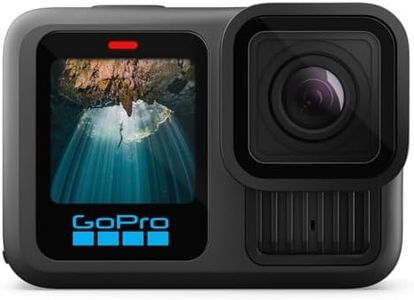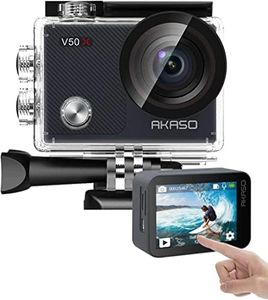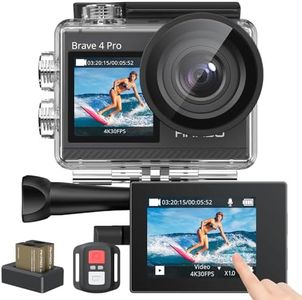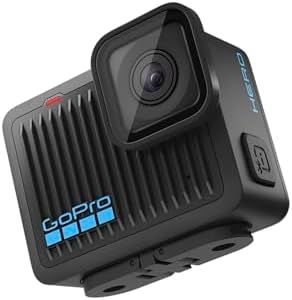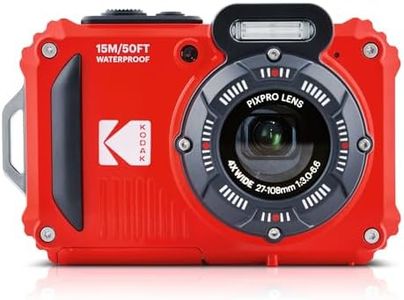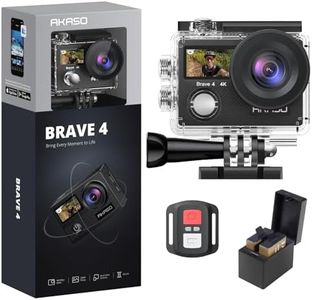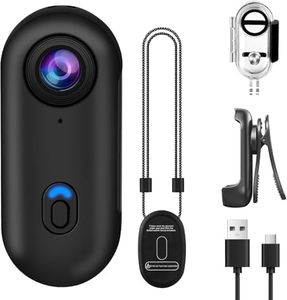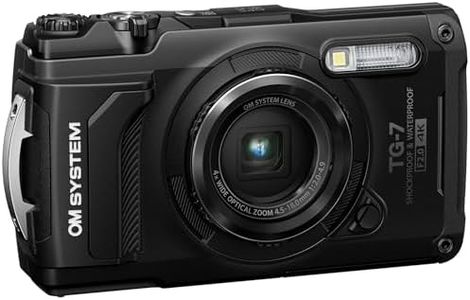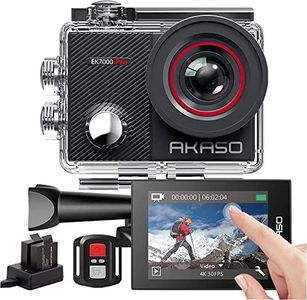We Use CookiesWe use cookies to enhance the security, performance,
functionality and for analytical and promotional activities. By continuing to browse this site you
are agreeing to our privacy policy
10 Best Cheap Underwater Cameras
From leading brands and best sellers available on the web.By clicking on a link to a third party's website, log data is shared with that third party.
Buying Guide for the Best Cheap Underwater Cameras
Choosing an underwater camera, even one that's affordable, requires an understanding of your needs and the environments in which you'll use it. Think about how deep you'll be diving, what kind of photos or videos you want to capture, and how comfortable you are with cameras in general. It's important to balance basic waterproofing with image quality, ease of use, and the right features for your activity, whether it's snorkeling, diving, or just poolside fun.Waterproof Depth RatingThe waterproof depth rating tells you how deep the camera can safely go underwater without getting damaged. This is important because if you go deeper than the rating, your camera may leak and stop working. Usual depth segments are up to 3 meters (good for shallow swimming and snorkelling), 10 meters (suitable for most beginner divers or snorkelers), and deeper than 10 meters (better for more adventurous or deeper dives). Choose a depth rating that matches the deepest you'll go, but also remember that a higher depth rating often means better overall durability.
Image and Video QualityImage and video quality relates to how sharp and clear your pictures and videos will be. This mainly depends on sensor size and megapixel count, but in underwater cameras at affordable levels, you'll often find resolutions from 8MP to 20MP, and video up to Full HD (1080p). Higher numbers typically give better results, but are also affected by underwater lighting conditions. If you want clear photos for sharing online or small prints, 8-12MP is generally enough; if you want to crop or print large photos, go a bit higher. For video, 1080p is standard and looks good for most use cases.
Battery LifeBattery life describes how long the camera will work before needing a recharge or new batteries. This is crucial underwater because you may not be able to change batteries during an outing. Generally, cheap underwater cameras last from 1 to 3 hours depending on usage. If you plan to take lots of photos or videos in one session, look for longer battery life or consider carrying a spare. For short, casual use, lower battery life might be fine.
Ease of UseEase of use refers to how simple the camera is to operate, especially underwater. Good underwater cameras should have large buttons, straightforward menus, and quick access to key features. Some models have touchscreen controls, but these may not work well underwater. If you're a beginner or want hassle-free shooting, pick a model known for simplicity, with easy-to-navigate menus and physical controls you can use while wearing gloves.
Size and HandlingSize and handling are about the camera's shape, weight, and how easy it is to grip underwater. Compact, lightweight cameras are easier to carry and handle, especially for kids or casual users. Some come with wrist straps or floats to help you keep hold of the device in water. If you'll be swimming a lot or taking the camera traveling, a smaller, lighter model makes things easier. Heavier cameras could be more durable but may be tiring to hold for long periods.
Additional FeaturesAdditional features might include built-in flash, WiFi connectivity, image stabilization, or the ability to attach accessories like external lights or waterproof cases. These can make your shooting experience more enjoyable or add creative possibilities. For basic underwater fun, you might not need extras. If you want to share photos quickly or shoot in low light, consider cameras with these features.
